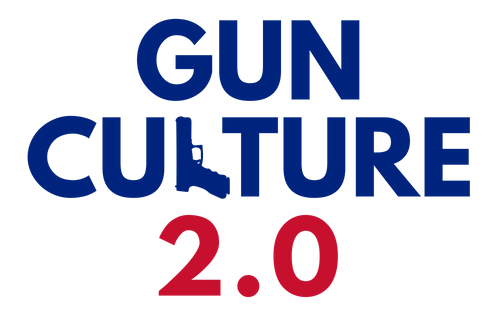In my previous two posts, I have (1) considered non-governmental certification of instructors as an option to provide consumers of civilian gun training with information about the quality of services they are purchasing, and (2) looked at Tom Givens’s Rangemaster Firearms Instructor Development and Certification course as an example.
In my last post I looked at the instructor development side of the course. In this post, I discuss the certification side.

Everyone who attends this course has the opportunity for development, whether as an instructor or just as a shooter. Indeed, as noted previously, there were a few students in the course who were more interested in developing their shooting skills than their instructing skills.
Only a person who passes a 3 pronged test, however, gets the Rangemaster certification that s/he:
“has successfully completed 24 hours of intensive training in marksmanship, gunhandling, personal tactics and adult teaching methodology and has demonstrated a high degree of proficiency with the handgun on several scored courses.”
The Standards
The standards that must be met to receive the Rangemaster certification are:
- 90% or higher on the FBI Pistol Qualification Course of Fire
- 90% or higher on a Rangemaster Instructor Qualification Course of Fire
- 90% or higher on an 85 question written examination based on Rangemaster written materials
Givens doesn’t spend a lot of time justifying these particular standards. He says he includes the FBI Pistol Qualification because it is a recognized national standard. “Not a high standard,” he maintains, “but a good bureaucratic standard.” (The actual course of fire with interesting commentary can be found on-line, for example at Active Response Training and Stuff from Hsoi. In this case it was shot without the barricade at the 25 yard line.)

The Rangemaster-specific Instructor Qualification, by contrast, is what Givens thinks people should be able to do. It is, therefore, more challenging. To wit: Unlike the FBI course of fire, no one in this course made a perfect score on the Rangemaster course of fire.
I did not see a copy of the written test, but was told that it was largely fill-in-the-blank questions where the preferred answers can be taken from the manual provided to student instructors. Despite this and his repeated reminders to spend time at night studying, Givens told the class that on average 1/6 of students still wash out on the written test.
The Results
The two qualification course of fire were shot first thing in the morning on the third day (Sunday) at John Murphy’s well-groomed (and well-hidden) FPF Training range.
Each course of fire is shot twice, and the student is credited with the higher of the two scores.

The written test was administered that afternoon and a brief “graduation” ceremony was held. The high score in the class was 296.8 out of 300, shot by a law enforcement agency trainer.
In the end, 10 of the 14 students met the 3 standards set by Givens to receive Rangemaster’s instructor certification.

Of the four who did not pass, two were civilian firearms instructors certified by other organizations.
This returns me to a point I made earlier. Voluntary certification is a way of addressing informational asymmetries in the market for specialized services, but the old refrain caveat emptor — let the buyer beware — still applies. Even if you go to a “certified” firearms instructor, you the consumer are ultimately responsible for determining the quality of the services you receive.
The range of quality represented by different firearms instructor certifications suggests a need for still more ways of assessing and assuring quality in the civilian firearms training industry. In coming posts I will consider 3 more: apprenticeship/guild models, credentials/credentialism, and branding.


Reblogged this on .
LikeLike
[…] final thought on Tom Givens’s Rangemaster Instructor Development and Certification course before I move on to considering apprenticeship, credentials, and branding in the private citizen […]
LikeLike
“…Each course of fire is shot twice, and the student is credited with the higher of the two scores…”
Unfortunately, in a gunfight, a person would be “credited” with the lower of the two scores.
LikeLike
Pow
LikeLike
[…] How Rangemaster Puts the “Certification” in the Instructor Development and Certification… […]
LikeLike
In my qualification I mentioned a couple of post back we shot twice and best was used however I agree with Khal that only your first few shots will count in a live situation.
I work over the weekend so catching up here professor. Hope I can afford your book when it comes out.
LikeLike
Thanks. I just hope there are still books by the time I finish! Lots to study still
LikeLike
[…] here 3+ years after the fact, Givens continues to make the same point today (as as I saw at the Rangemaster Instructor Development course I attended earlier this […]
LikeLike
[…] my posts from this year on the Rangemaster Instructor Development Course, Gunsite 250 Defensive Pistol, Combat Focus Shooting Instructor Conference, Travis Haley of Haley […]
LikeLike
[…] How Rangemaster Put the “Certification” in the Instructor Development and Certification … […]
LikeLike
[…] have been wanting to observe Brian Hill teaching since I met him in Tom Givens’s Rangemaster instructor development and certification course in May of 2017. The Hills were generous enough to invite me to sign my wife Sandy up for the course […]
LikeLike
[…] How Rangemaster Put the “Certification” in the Instructor Development and Certification … […]
LikeLike
[…] How Rangemaster Puts the “Certification” in the Instructor Development and Certification… […]
LikeLike
[…] How Rangemaster Puts the “Certification” in the Instructor Development and Certification… […]
LikeLike